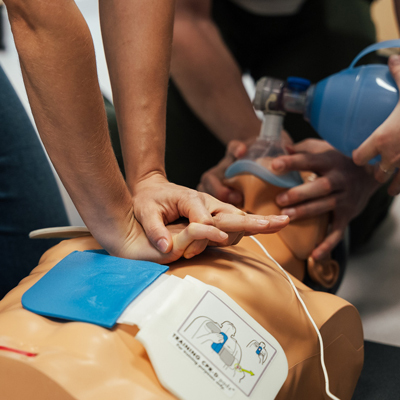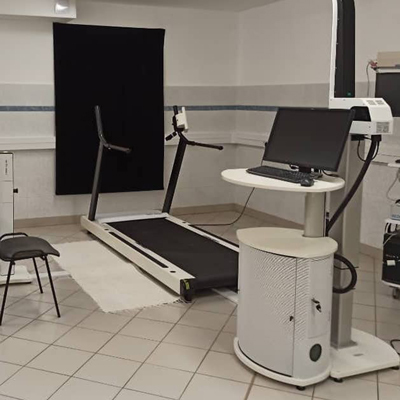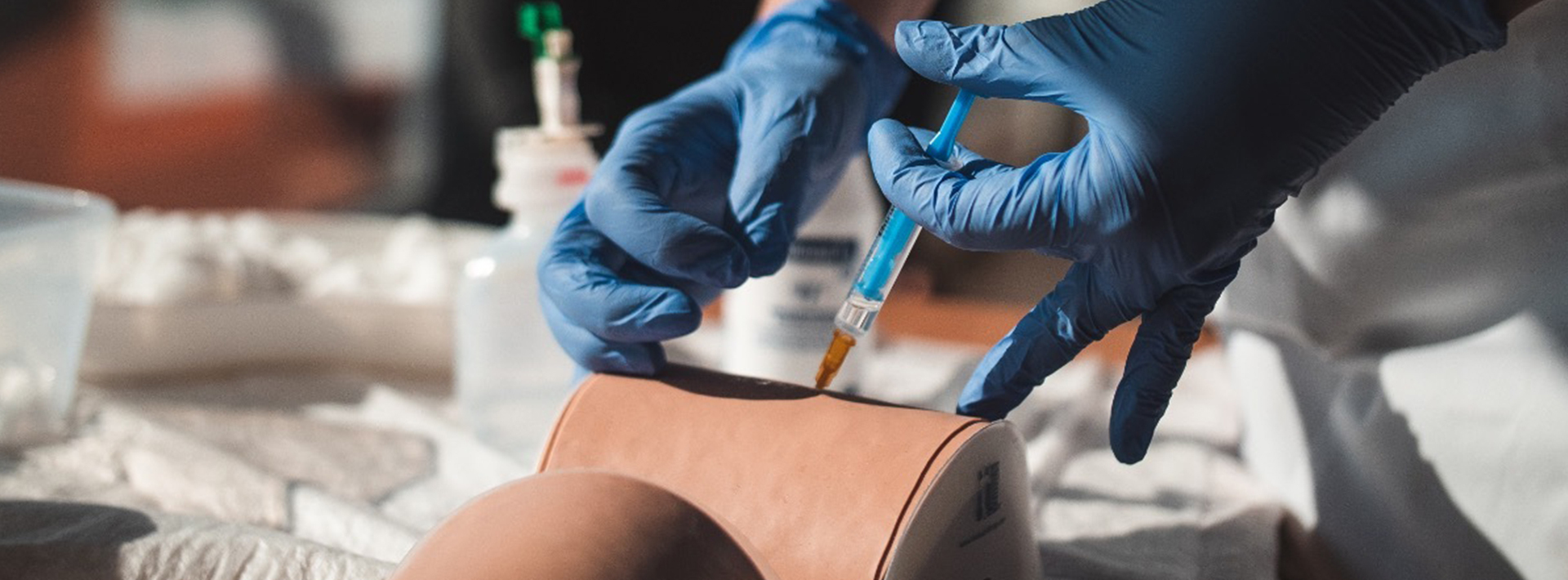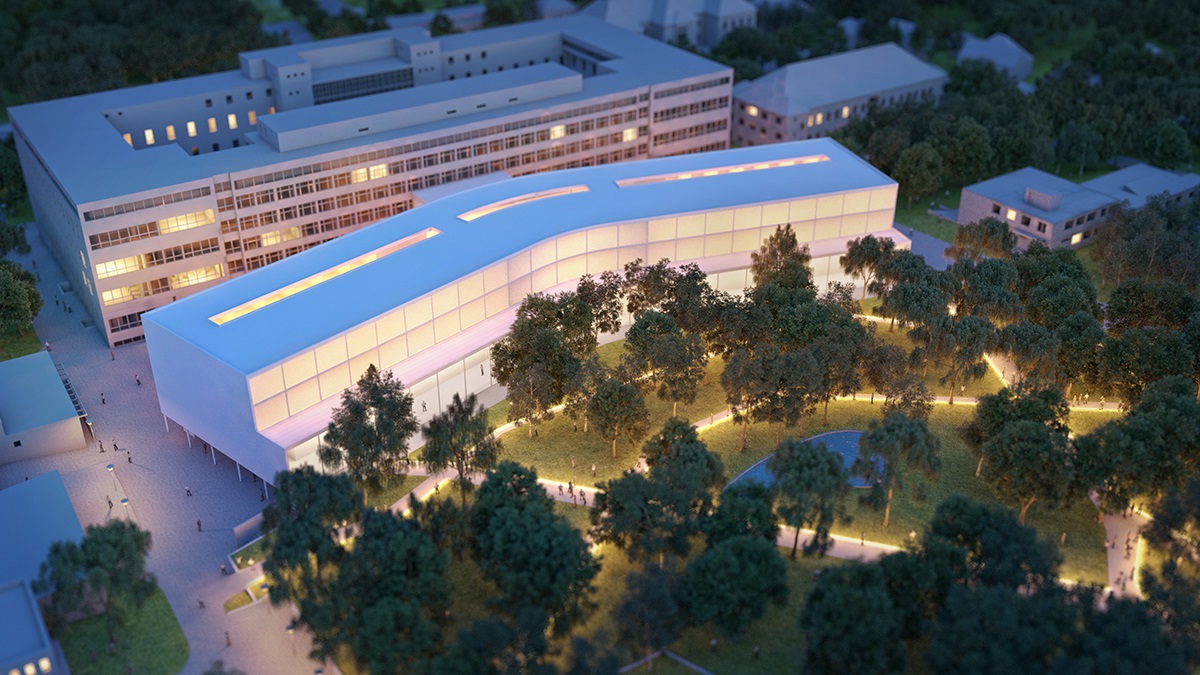History
The Center for Advanced Medical Technology was created by the close, daily cooperation of three research-development units connected to the Medical School. Over 60 employees of the virtual, 2150 square metres facility work in various premises of the institution system, operating on a distributed principle. The Center for Advanced Medical Technology incorporates the Simulation Education Centre founded in 2016 (currently named Medical Skills Education and Innovation Centre), the 3D Printing and Visualisation Centre, founded in 2018, and the Biomechanical Laboratory of the UP CC Department of Neurosurgery.
Innovation in service of medicine
With its innovative equipment and highly trained researcher and developer experts, the research, development and innovation infrastructure of the Center for Advanced Medical Technology (CAMTech) is capable to support almost the entire process of medical equipment and software development, and prototype manufacture. As part of the innovation ecosystem of the University of Pécs, the first step of the validation process of ideas and challenges emerging at clinics and medical education is evaluating student, educator or researcher projects in an organised way. During the next stages of development, there is an option for “dry” simulations, during which the developed products or services are tested with world-class medical simulators and the capacity of training surgery rooms of the Research Infrastructure. Cadaver surgeries (“wet” simulations) can be followed by pre-clinical, animal experiment phases in our eminent partner institution, the Pre-Clinical Research Centre. In the last phase, work in the clinical environment begins. In close, daily cooperation with experts of the medical and health science fields, our engineers and developers can provide TRL 1-9 (Technology Readiness Level) support for the development of innovative equipment and software in several fields.
130
Total number of scientific publications
24
62
2187
m2
Area of infrastructure
7 275 004 668 HUF
Sum of awarded national and international tenders (2018-2023)
66
Number of cooperative ventures
10
Fields of expertise, main areas of activities:
- Medical material technology – structural and mechanical surveys
- Surgery planning, modelling and medical simulation
- Medical equipment – prototype manufacture, development
- Defence-healthcare development
- Biomechanics, movement analysis
- Prosthetics, orthotics
- Healthcare software development, AR and VR technology
- Medical and engineering trainings (gradual, post-gradual)
Mission:
The Center for Advanced Medical Technology is committed to the implementation, development and popularisation of the most modern solutions in medical technology. We believe that new medical tools, equipment and software created with the development of interdisciplinary areas of the medical and engineering fields serve the benefit of patients, and support and simplify the job of healthcare providers. The research, development and innovation projects ongoing in our institution are part of the digital revolution of healthcare. With the help of our colleagues, our goal is to provide complex engineering solutions to challenges emerging in everyday patient care and medical education, following along with the whole medical technology development process.

Medical Skills Education and Innovation Centre
The education of gradual and post-gradual medical and engineering students and doctors takes place in our ultramodern, over 1500 square metres simulation centre. Our matrix classroom with several high-fidelity simulators, computer-based audio-visual education support systems and simple “basic task” simulation trainers, our 4-table cadaver teaching surgery room prepared for every surgical type of healthcare field, our specially designed operational medicine classroom, and a VR-AR classroom with a well-prepared technical staff all serve education and research. Another task of our centre is providing inter- and multidisciplinary workgroups with validation and testing platforms; therefore, we are in close cooperation with educational, clinical and research units of the University, specifically with the research group dealing with 3D planning and additive production, and the medical-engineering interdisciplinary field. Our doctors and healthcare professionals take active parts in the dissemination of innovative medical technology solutions.

UP 3D Centre
The University of Pécs 3D Printing and Visualisation Centre uses cutting-edge technologies for supporting medical equipment and software development. The nationally unique machinery includes desktop and 3D printers, casting and metalworking equipment to allow medical technology prototype manufacturing and small series production as well. The planning process is helped by 3D scanners, the software background provides the opportunity for complex CAD and organic modelling. The Centre houses a well-equipped material testing laboratory that is one of the best-equipped destructive material testing lab. It can provide tensile, stress, torsion, impact and fatigue testing, among others. The results are directly used in equipment development processes and research projects. Workers from the Medical Skills Education and Innovation Centre and the Biomechanic Laboratory participate in validating the development. The unit has an important role in keeping in contact with healthcare industry members as well.

Biomechanical Laboratory
Our Biomechanical Laboratory uses the most modern technology available to create an opportunity for implementing research and development projects in the field of neuro-rehabilitation, and for developing patient care in the framework of personalised medicine. The research done at the Biomechanical Laboratory is done in dynamic cooperation with the 3D Printing and Visualisation Centre, thereby creating the clinical and infrastructural background for clinical trialling the latest medical technology tool developments. Aside from taking prominent tasks in clinical research, the Lab also fills an important role in healthcare and medical education. It is also an important unit of the medical-engineering education, and maintains close connections with multiple industry partners.
Functionality
There are doctors, engineers, coders and IT experts, healthcare engineers, physiotherapists and physicists among the experts of the inter- and multidisciplinary research groups. Experienced research leaders and dedicated project managers ensure the successful implementation of research, development and innovation projects. One part of the research groups is specifically responsible for the realisation of applied research-development results. Another group of experts is working on the execution of market projects that bring revenue. A separate group is responsible for the implementation of education programs and services. A fundamental aspect of activities is that both research products and results of market projects must be usable in clinical market or social levels. This is helped along by the fact that most employees have industry background as well. Coordinated everyday work is ensured by a shared administrative and management group, who, aside from the everyday functions of the unit also support researchers in procurements, planning and logistical tasks, and also in application processes.


